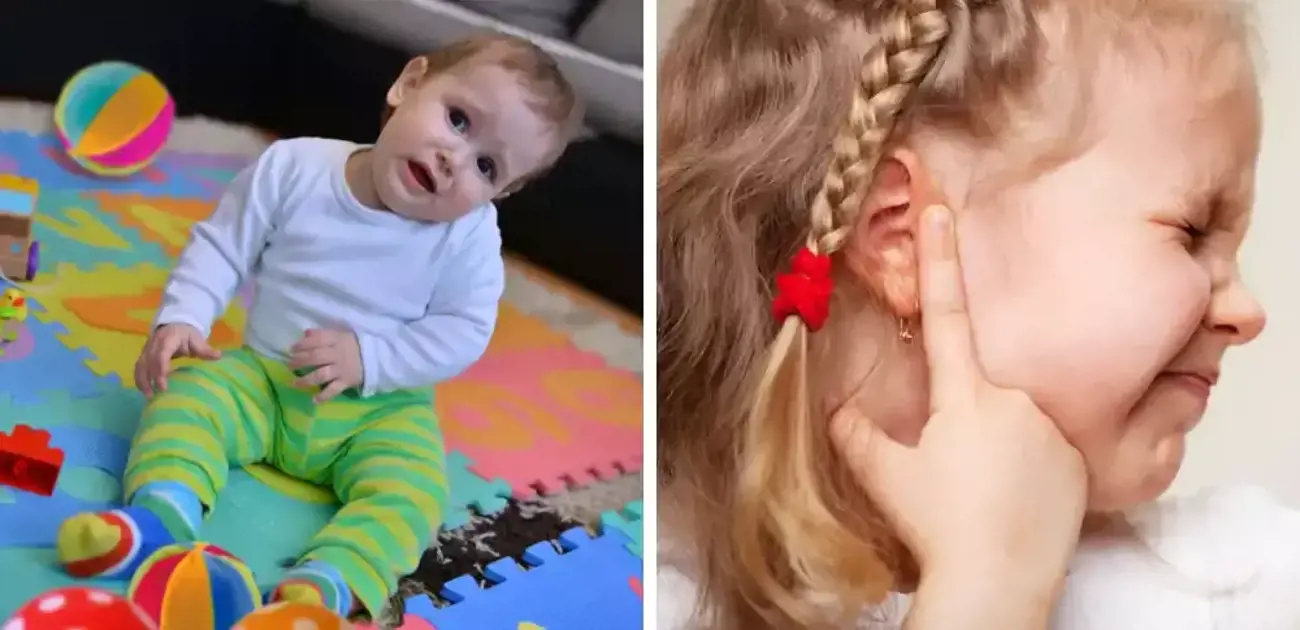Researchers are one step closer to eliminating children’s ear infections
Middle ear infections are common in young children, but that doesn’t make them trivial.
These infections cause ear pain, inflammation, itching, nausea, and fatigue among other discomforts, and are a leading reason for children to be taken to the doctor and prescribed antibiotics.
In Australia, ear infections affect 650,000 youngsters a year, and those with multiple ear infections often need grommet surgery. This involves tiny tubes being inserted into the ear drum to drain fluid from the middle ear, and grommets are the second most common reason for young Aussie children to need surgery.
Up to a third of these children will need multiple grommet procedures, and repeated middle ear infections can cause hearing loss, which, in turn, impacts children’s education, speech, behaviour, balance loss and social relationships.
With all this in mind, it’s great to hear that Australian researchers have identified the main bacteria responsible for recurrent blockage, ear infections and repeat ear surgeries in children.
Here we look at the culprit for this condition and see how this research takes us one step closer to wiping out childhood ear infections for good.
What bacteria mainly causes ear infections and surgeries in youngsters?
Earlier research has established that a bacteria called Haemophilus influenzae (or ‘NTHi’ for short) is the main cause of middle ear infections, and now researchers at the Telethon Kids Institute have linked this bacteria with repeated infections and multiple surgeries.
Specifically, the Institute’s Wesfarmers Centre of Vaccines and Infectious Diseases has found that children with NTHi bacteria in their ear during grommet surgery were, ‘Three times more likely to have re-occurring infections and require repeated procedures to address their ear health issues.’
How will this finding help researchers wipe out childhood ear infections?
Knowing what bacteria causes repeat ear infections and surgeries is important because it allows researchers to take a two-pronged approach and work towards:
- Preventing NTHi from growing in a child’s ear in the first place; and
- Developing new treatment methods to make sure any bacteria living in the ear is killed straightaway and doesn’t cause further problems.
Already, researchers are developing a nasal spray to prevent NTHi from causing middle ear infections. They say this spray contains a ‘friendly’ type of bacteria found in the nose, which works like a probiotic to guard the ear from infection.
Once NTHi does take hold in the ear, it’s difficult to treat because this bacteria lives in a sticky glue called ‘biofilm’ which shields it from antibiotics, causing congestion and blocks the ear canal.
For this reason, the Institute’s researchers are working with doctors at Perth Children’s Hospital on the ATOMIC Ears Study and trialling eardrops that hope to break down the biofilm of children suffering from recurrent middle ear infections.
The eardrop medicine is called Dornase alfa, and although it’s usually used to treat cystic fibrosis, it’s hoped that some drops of it during and after grommet surgery will help prevent further ear infections and reduce the number of children needing repeat grommet surgery.
What should you do if your child has a middle ear infection?
The first symptoms of a middle ear infection are usually those of a cold, with children having a sore throat, runny nose, sneezing, temperature and possible loss of appetite.
Babies often cry a lot, rub their ears from jaw pain and ringing and have trouble sleeping, while older children may complain about a feeling of fullness and pressure in their eardrum, poor balance, a painful earache, a headache or even neck pain.
Information from health experts recommends that you give your child paracetamol if they’re in pain or have a fever, feed them plenty of water and perhaps try a warm compress on their ear. It can help to prop your older child up with pillows to sleep. Keep the house nice and quiet, and don’t forget to dispense lots of cuddles!
You should see a doctor for medical treatments or advice if your child:
- Is still feeling poorly after 48 hours
- Has very bad pain
- Has a discharge or pus from their ear
- Has diarrhoea, vomiting or a very high temperature
- Is having trouble hearing due to swelling
- Keeps getting middle ear infections
- Is less than 12-months-old
And to help prevent ear infections and other complications, HealthDirect recommends that:
- Parents and guardians give up smoking
- Babies breastfeed past six months of age
- Babies stop using a dummy at six months
- Older children always wash their hands after coughing or nose-blowing
- Older children wear earplugs when swimming
Health Navigator says that ‘Most children outgrow ear infections and have no problems with learning or hearing in the long term,’ but for children who keep getting ear infections no matter what they do, the new research is fantastic to hear about.
Fingers crossed that the nasal spray and eardrop trials are successful in preventing middle ear infections and surgeries.
References


































